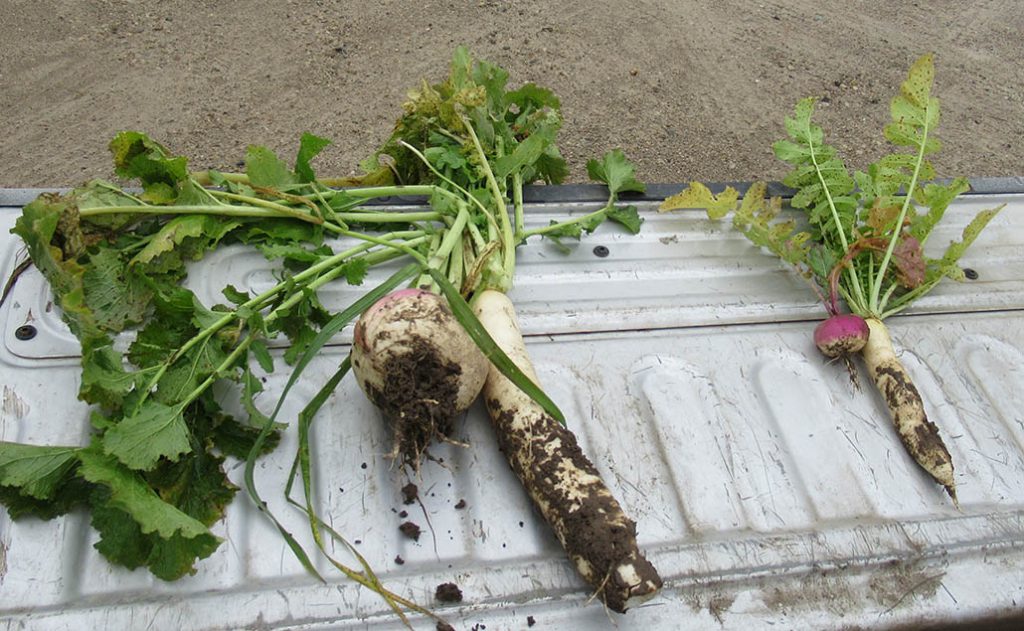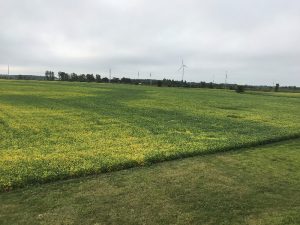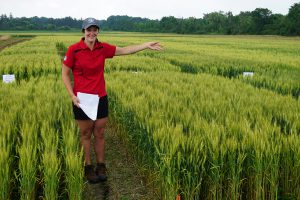Biological inputs
THEIR POTENTIAL ROLE IN SOIL HEALTH MANAGEMENT

CAN BIOLOGICAL INPUTS help increase farm profitability and sustainability? According to academic and ministry experts, the answer is – maybe.
More specifically, they say new microbial inputs might play a positive role if used in tandem with the fundamentals of good soil management. Such products are not miracle solutions, however, and farmers interested in using them need to gauge their effectiveness carefully.
WHAT ARE BIOLOGICAL INPUTS?
Christine Brown, field crop sustainability specialist with the Ontario Ministry of Agriculture, Food and Rural Affairs, says biological inputs can refer to a wide array of organic amendments, from cover crops and manure to fungal inoculants and growth-promoting bacteria. While the benefits of the former are well-known, companies are now marketing products in the latter categories (microbials) as promising boons to yield, crop quality, soil health, and fertilizer costs.
An example of a potentially useful biological input, says Jake Munroe, the ministry’s soil fertility specialist for field crops, include mycorrhizal fungi. These organisms colonize roots and can be used to help plants (e.g. corn) access pools of phosphorus and other nutrients – which are otherwise unavailable – thus increasing nutrient uptake efficiency.
Another example is humic acid – a complex carbon molecule traditionally viewed as a concentrated form of organic matter. Applications of humic acid, says Munroe, are supposed to improve water and nutrient uptake in crops.
Overall, he adds increased commercial interest in new biological inputs appears to be driven by a general desire, on the part of farmers, to improve soil health and microbial activity.

RESEARCH NEEDED
Brown says an overall lack of independent research poses serious credibility barriers for many products. Munroe expresses a similar sentiment, saying verified results from university field trials are often non-existent. In other cases, such as with humic acid, what information is available frequently highlights conflicting results.
“The obvious bio-stimulants are inoculants, especially for legume crops, and their economic value has been well documented,” says Brown. “There are many other stimulants being marketed, and I am afraid some will not deliver […] we really need side by side comparisons.”
Verifying product effectiveness is further complicated by a changing understanding of soil organic matter. Munroe says current scientific knowledge indicates the most stable forms of soil organic matter are comprised of smaller, more simplistic carbon molecules. This contrasts to the earlier view, and suggests the large, complex carbon molecules – like those comprising humic acid – may not provide the same set of potential agronomic benefits as once thought.
The number of reliable comparison studies is increasing, however. For her own part, Brown is currently involved with a project analyzing how microbial stimulants work within high organic matter environments (compost). She hopes to conduct similar research on degraded soils – fields with low rotation diversity, excessive tillage, and so on – as she believes biologicals could have a more noticeable impact there.
Other university researchers both in and outside Ontario are also continuing to develop and test microbe-based inputs (see sidebar).
CALCULATING ROI
For Munroe, farmers interested in trying biologicals should consider setting up their own on-farm trials. This can help determine whether the product in question is beneficial and cost-effective.
“Like with anything it comes down to yield, and maybe quality […] really the approach would be to do a well-set up replicated strip trial, especially for products like mycorrhizal inoculants,” he says.
“It can be a simple trial to do on a small acreage. Really any grower should go through that process in a season before adopting it on a large scale.”
Regardless of the product, both Brown and Munroe reiterate there is no fix-all sustainability solution. Even if a biological input works as advertised, they say, such products must be used as part of a wider management strategy that already addresses soil and microbial-health fundamentals (e.g. increased plant diversity, minimized soil disturbance, and maximized time with live roots in the ground).
Looking at wider soil health changes are also something to consider. Many soil testing labs, says Brown, now offer services looking at a wide array of soil health indicators, in addition to nutrient levels. Performing a bulk density test – to see how long water takes to infiltrate a soil sample – is another option, as is checking for earthworm populations.
If a biological stimulant is applied without additional soil-health practices, Brown adds, it might still be possible to improve yield. She fears this could have a “band-aid effect” by taking focus away from long-term soil improvement strategies.
“It’s a little human nature to look for easy solutions for a problem,” says Munroe. “That’s just not the way things work, and especially not the way soils work. If you’re a grower looking to solve some major soil challenges with something that comes out of a jug, I just don’t see that happening.”
RESEARCHING BIOLOGICALS
Manish Raizada, plant scientist and professor at the University of Guelph, says microbe-based biological inputs do have enormous potential despite a general lack of verified data. Indeed, he says these products are already effective go-to tools for farmers in less developed parts of the world, where synthetic fertilizer is not always an option.
What’s more, Raizada says biologicals tested within lab environments often show significant improvements to plants. But unfortunately, those improvements cannot be replicated in the field.
Why that translation fails, he says, is not fully understood. However, it’s likely the competition posed by preexisting microbes, and environmental fluctuations like temperature and moisture, that make outside growing environments too complex for microbial inputs to work effectively – or at least as advertised.
Another factor might be variability between how microbes work on different crop varieties. To this end, Raizada and his colleagues are set to study how 20 different microbes affect the nitrogen absorption of 20 different modern corn hybrids. All of the microbes being tested derive from landrace maize varieties (locally-cultivated, indigenous cultivars) capable of fixing some nitrogen.
“Microbes tend not to do things alone. In nature they do things in groups,” he says.
“I think we’re going to need a mixture of microbes to work across varieties […] It’s the host, times the microbe, times interaction with the environment. We somehow have to stabilize this.”
Outside his lab, Raizada says billions of research dollars are currently being directed towards the development of microbe-based inputs worldwide. He anticipates a potential “avalanche” of products arriving on the market in the coming years.
He says farmers interesting in trying biological inputs should adopt new products cautiously, and look for good, preexisting field data. This could include asking the salesperson how a product performs in different crop varieties, and across different environments (e.g. cool and wet versus hot and dry). If the data looks convincing, it might be worth trying a small test plot for more than one year.
“None of these things are snake oil. There’s just a field translation problem […] there is real potential out there.” •

























